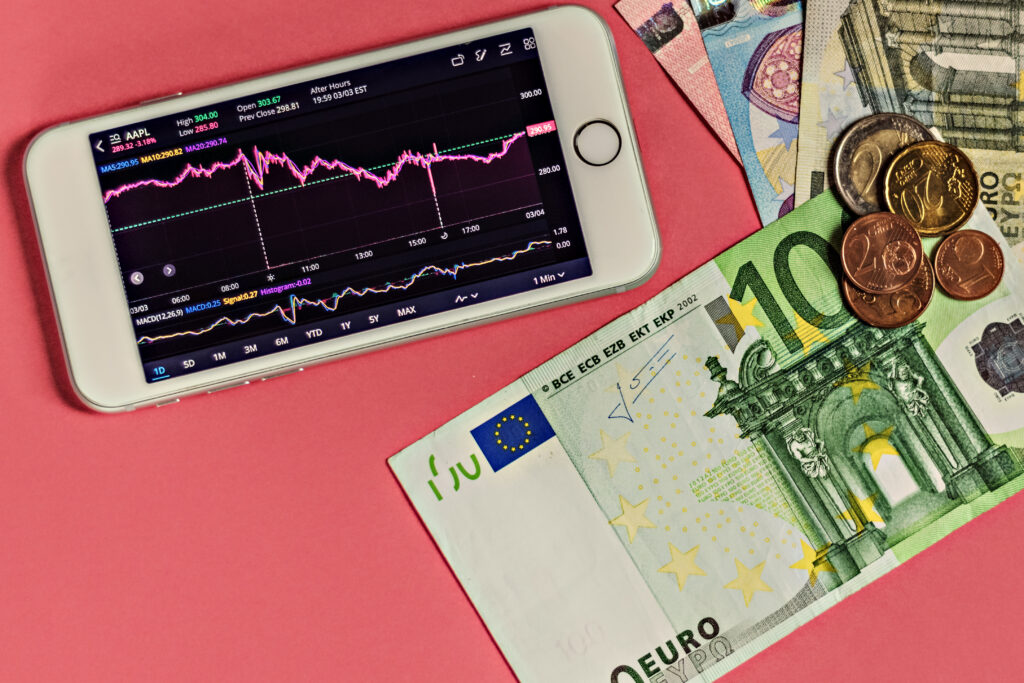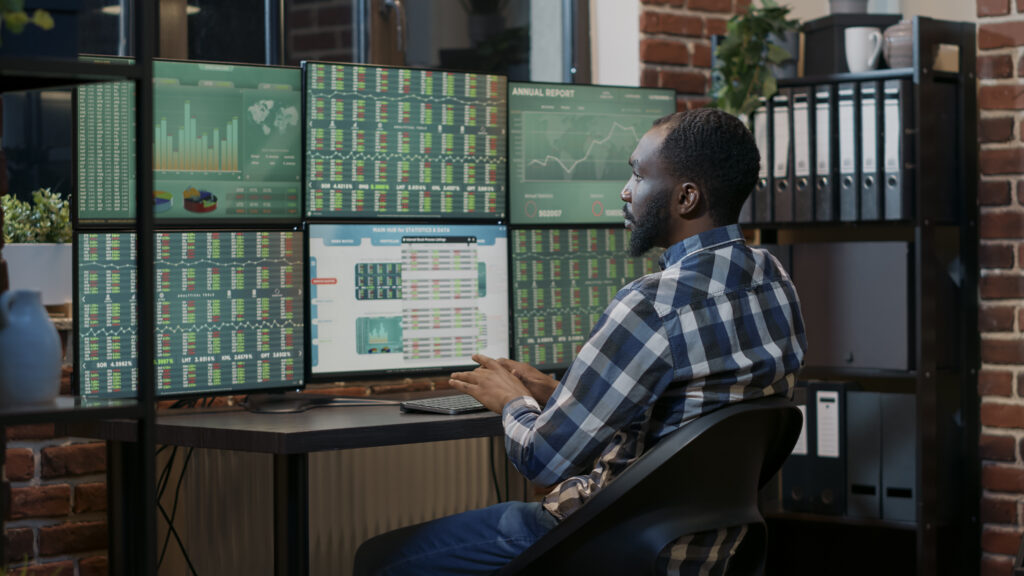Introduction
In recent years, sustainable agriculture and forex markets have become increasingly connected, reflecting a global shift in both farming and finance. What was once seen as an emerging concept is now a global necessity. Driven by climate change, rising food security demands, and the urgent need for environmental sustainability, governments, farmers, and consumers are adopting practices that promote ecological balance and long-term viability. The way we farm today directly shapes the economic stability of tomorrow.
The rise of sustainable agriculture is not only redefining food production but also reshaping financial markets worldwide. Practices such as organic farming, agroecology, and resource-efficient systems are altering commodity flows, trade balances, and investment behaviour. These changes are deeply felt in forex markets, which are highly sensitive to global trade patterns and economic resilience. Nations that invest heavily in sustainable farming or export responsibly produced goods often see their currencies reflect this strength.
This article explores how sustainable agriculture and forex markets are interlinked, focusing on their impact on food security, ecological farming, and long-term financial stability. By examining these dynamics, we uncover how sustainability in agriculture can influence global currencies and trading opportunities.
Sustainable Agriculture’s Impact on Currency Fluctuations
The global transition towards sustainable agriculture is a monumental shift reshaping not just farming but also financial markets, particularly forex. As nations adopt sustainable practices, their trade balances shift, creating measurable impacts on currency values and new opportunities for investors.
Sustainable agriculture emphasises ecological harmony, food security, and long-term viability. It includes organic farming, agroecology, and resource conservation, all driven by rising concerns about climate change and environmental sustainability. By improving efficiency and producing high-value goods, these practices extend their influence well beyond the fields.
Trade balances provide the clearest link between sustainable agriculture and currency fluctuations. Countries adopting sustainable methods often see:
- Export Growth: Eco-friendly goods attract premium global prices, boosting export revenues.
- Reduced Import Dependency: Lower reliance on costly fertilisers and pesticides improves balances.
- Global Demand: Rising consumer preference for sustainable products strengthens exporting nations and their currencies.
For forex traders, these shifts open several opportunities. Monitoring currency pairs from sustainability-focused economies, staying updated on agricultural policies, and diversifying portfolios with such currencies can create profitable strategies. Since sustainable agriculture is a long-term global trend, aligning trading approaches with this transition offers enduring benefits.
Real-world examples highlight this impact. Australia’s growing organic sector in grains, meats, and dairy has boosted demand for the Australian dollar. Switzerland, with strict organic standards and a global reputation for quality, has strengthened the Swiss franc as consumers worldwide seek its products.
Sustainable agriculture is no longer just an environmental priority—it is an economic force influencing currency markets and shaping forex opportunities for forward-thinking investors.
Organic Farming: A Key Pillar
Organic farming has emerged as a cornerstone of sustainable agriculture, offering a healthier and more eco-conscious alternative to conventional methods. More than just a farming technique, it reflects a philosophy rooted in natural processes, soil health, and biodiversity, making it central to the global push for sustainable food production.
At its core, organic farming reduces or eliminates synthetic pesticides, herbicides, and fertilisers. Instead, it relies on natural methods such as compost, crop rotation, and cover crops to enrich soil and maintain productivity. Healthy soil is the foundation of successful agriculture, and organic practices protect it by improving fertility, reducing erosion, and ensuring long-term sustainability.
Another defining feature of organic farming is its commitment to biodiversity and ecological balance. By avoiding synthetic chemicals, farms provide safer habitats for pollinators, insects, and wildlife. This not only enhances pollination but also reduces dependence on chemical pest control while strengthening ecosystems against climate stress.
Organic farming also delivers healthier, chemical-free food products, which aligns with growing consumer demand for safe and sustainable choices. Rising awareness has fuelled global demand, opening new economic opportunities for farmers and boosting international trade in organic goods. Countries with strong organic sectors are now better positioned in global markets, often enjoying improved trade balances.
The environmental benefits are equally significant. Organic farming reduces water pollution, protects natural habitats, improves air quality, and lowers the carbon footprint of agriculture through practices like reduced tillage and cover cropping. Though transitioning to organic methods can be challenging due to certification requirements and initial yield adjustments, the long-term ecological and economic gains outweigh the difficulties.
In today’s world of climate change and health concerns, organic farming stands as a true pillar of agricultural transformation, ensuring a healthier, more resilient, and sustainable future.
Food Security: A Global Imperative with Forex Implications
Food security—consistent access to safe, sufficient, and nutritious food—is one of the 21st century’s most pressing challenges. With the global population nearing 10 billion by mid-century, rising demand will strain supplies already threatened by climate change, environmental degradation, and resource depletion. Building resilient food systems is critical for health, stability, and economic growth.
The Role of Sustainable Agriculture
Sustainable agriculture strengthens food security by adopting eco-friendly practices that enhance resilience and conserve resources.
- Resilience: Crop rotation and agroecology reduce vulnerability to climate extremes.
- Conservation: Protecting soil health and efficient water use safeguards productivity.
- Diversification: Broader crop variety reduces reliance on a few staples and stabilises supply chains.
Currency Fluctuations and Food Security
Food security is closely tied to forex markets, as exchange rate volatility affects the affordability and availability of essentials.
- Crop yields: Currency devaluation raises costs of seeds, fertilisers, and machinery, pushing up food prices.
- Trade disruptions: Currency swings make imports more expensive for dependent nations.
- Geopolitical events: Sanctions and trade disputes alter currency values, disrupting commodity flows.
Forex Opportunities
Traders monitoring sustainable agriculture can identify opportunities by watching yields, trade policies, and geopolitical events. Diversifying portfolios with currencies from sustainability-focused nations spreads risk and enhances stability.
Agroecology and Market Dynamics
Agroecology, blending ecological and social principles, is reshaping both agriculture and forex. By encouraging biodiversity, conserving resources, and promoting local food production, it stabilises supply chains while influencing trade patterns and currency valuations.
Agroecology’s Influence on Forex Markets
Agroecology, built on principles of sustainability and biodiversity, is not only transforming agriculture but also leaving a visible mark on forex markets. By diversifying exports, reducing dependency on imports, and encouraging sustainable investments, agroecology directly impacts trade patterns, currency valuation, and global commodity flows.
Shifts in Trade Patterns
Countries adopting agroecology often diversify their agricultural exports by producing organic crops, fair-trade coffee, and sustainably sourced commodities. This diversification introduces new trade flows and shifts currency demand toward these nations. At the same time, greater self-sufficiency reduces the need for imported food, lowering demand for foreign currencies and subtly altering exchange rate dynamics.
Currency Valuation Changes
Environmental resilience plays a major role. Agroecology reduces vulnerability to climate shocks, making countries appear more stable to investors. Long-term sustainability commitments can also attract foreign investment, strengthening currency performance. As confidence grows, currencies of agroecology-driven economies may gain global appeal.
Impact on Commodity Markets
Agroecology supports the growth of sustainable commodities, including organic crops and responsibly sourced products. Rising consumer demand for these goods influences global commodity prices, which directly affects forex trading strategies. In addition, investments in connected industries—such as renewable energy, conservation technologies, and ethical supply chains—shape commodity markets and currency movements alike.
Real-Life Examples
Brazil provides a clear example. Its agroecological exports, especially organic soybeans and coffee, have reshaped trade and boosted demand for the Brazilian Real (BRL). Likewise, nations investing in agroecology often prioritise renewable energy projects, which influence energy markets and indirectly impact forex trends.
Agroecology’s impact extends well beyond fields and farms—it is increasingly shaping how traders evaluate currencies, commodities, and investment opportunities in a changing global economy.
Strategies for Sustainable Agriculture-Centric Forex Trading
As the world transitions toward sustainable agriculture, forex traders must adapt their strategies to reflect the growing impact of ecological practices on global economies. By prioritising constant monitoring, policy awareness, targeted currency pairs, and portfolio diversification, traders can align with this new landscape.
Monitoring Agricultural Commodities
- Stay Informed: Track prices of sustainable commodities such as organic crops and responsibly sourced goods.
- Correlation Analysis: Study links between commodity price shifts and currency fluctuations to identify trading opportunities.
- Timely Action: React quickly to major price changes with well-planned entry and exit strategies.
Staying Aware of Policy Changes
- Government Initiatives: Monitor subsidies and incentives promoting sustainable farming, as they can influence currency strength.
- International Agreements: Track trade deals and accords related to sustainable food production that reshape trade flows.
- Environmental Regulations: Understand how stricter sustainability rules affect industries tied to agriculture and, in turn, forex markets.
Targeting Key Currency Pairs
- Country Selection: Focus on nations investing heavily in sustainable agriculture.
- Currency Analysis: Compare their currencies against major partners for strength and resilience.
- Trade Balance: Consider how sustainable exports improve balances, often strengthening national currencies.
Portfolio Diversification
- Renewable Energy: Invest in currencies tied to nations growing solar, wind, or biofuel sectors.
- Ethical Supply Chains: Track companies prioritising sustainable sourcing and global demand for such products.
- Conservation Technologies: Watch for innovations that boost productivity while preserving resources.
Sustainable agriculture is more than a farming shift—it is shaping forex dynamics worldwide. Traders who integrate these strategies can better navigate volatility while capturing opportunities in this evolving market.
Conclusion
The global shift to sustainable agriculture is more than a trend—it is a lasting transformation in how food is produced and economies adapt. Its influence is extending beyond farms into forex markets, reshaping trade flows, currency valuations, and investment strategies. For investors and forex traders, staying informed about sustainable farming practices, monitoring policy changes, and aligning strategies with this transition are essential steps toward long-term success.
By recognising the link between sustainable agriculture and forex dynamics, traders not only strengthen their market positions but also support a movement driving ecological balance, economic resilience, and global food security. This integration of sustainability and finance ensures that trading decisions contribute to a future that is both profitable and sustainable.
Read our latest article on Supply Chain Innovations
FAQs
What is sustainable agriculture, and why does it matter in forex trading?
Sustainable agriculture prioritises eco-friendly and viable farming practices. It matters in forex trading because it influences trade patterns, economic resilience, and currency fluctuations.
How can I integrate sustainable agriculture into my forex strategy?
Monitor sustainable commodity prices, track related policies, focus on currency pairs from agriculture-driven nations, and diversify into renewable energy and ethical supply chains.
What commodities should I watch when trading with a sustainability focus?
Pay attention to organic crops, fair-trade goods, and sustainably grown products. Analyse their correlation with currency movements and act on major shifts.
Why is policy awareness important?
Government initiatives, subsidies, and environmental regulations directly affect agricultural output and currency valuations. Staying updated helps traders make informed decisions.
Do international agreements influence forex markets?
Yes. Trade deals and sustainability accords alter global trade patterns and impact currency pairs tied to the nations involved.
How do I identify relevant currency pairs?
Look for nations investing in sustainable agriculture and eco-friendly farming. Study their currencies against major partners for strength and stability.
Why should I diversify into sustainability-linked industries?
Sustainable agriculture impacts renewable energy, conservation tech, and ethical sourcing. Diversifying into these sectors spreads risk and captures emerging opportunities.
What risks should I be aware of?
Risks include policy changes, commodity price swings, and geopolitical disruptions to trade. Effective risk management is key.
Can sustainable agriculture strengthen a currency?
Yes. By boosting resilience and stability, sustainable practices can enhance investor confidence and support stronger currency performance.
Is sustainable agriculture a long-term trend?
Absolutely. It reflects a structural shift in global food systems, making it a lasting factor shaping forex markets.
Click here to read more on Sustainable Agriculture




